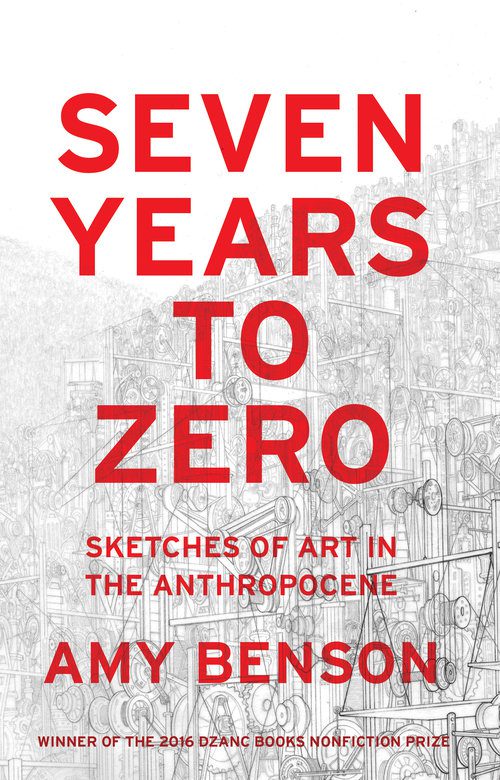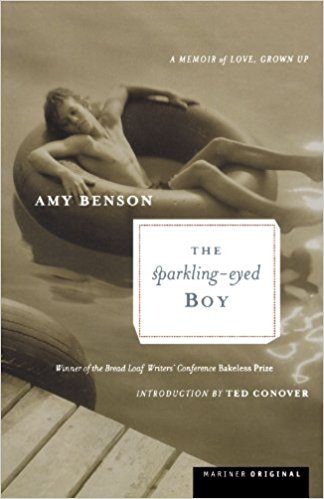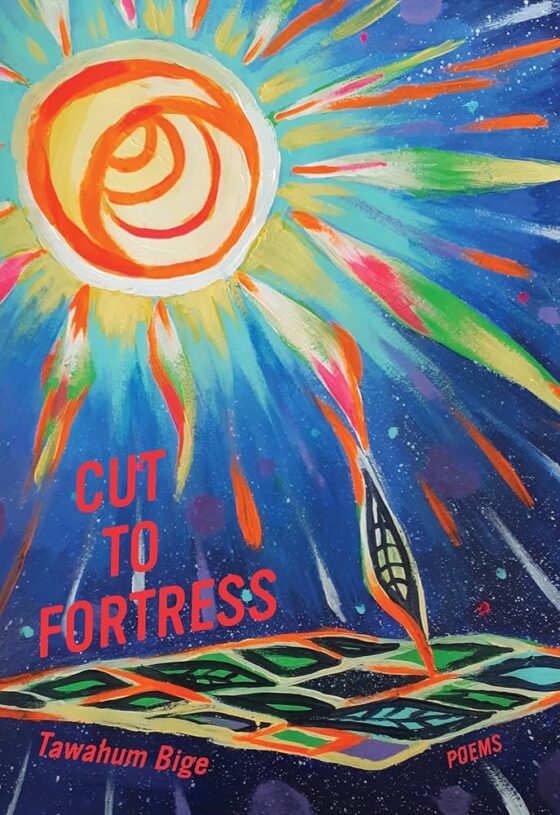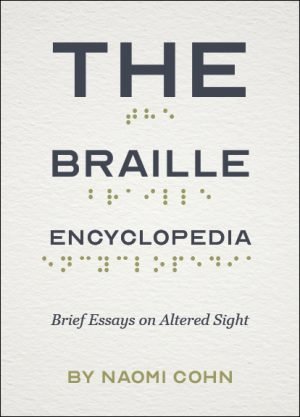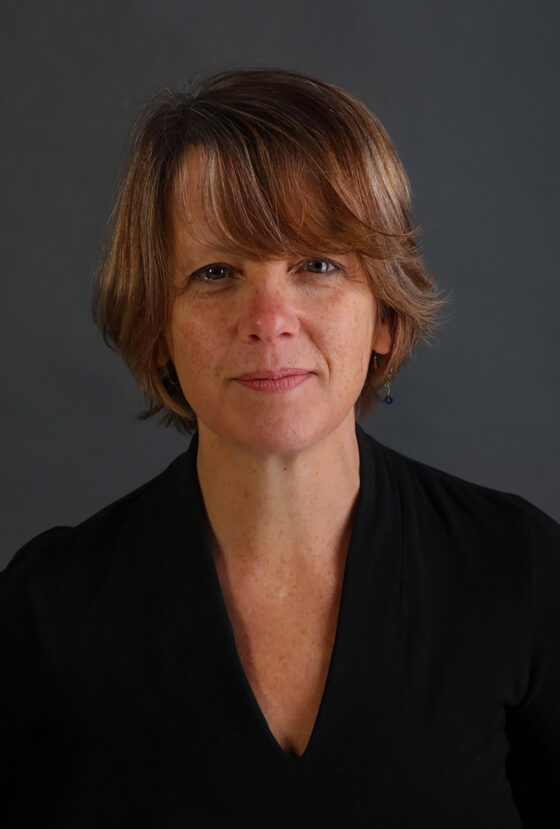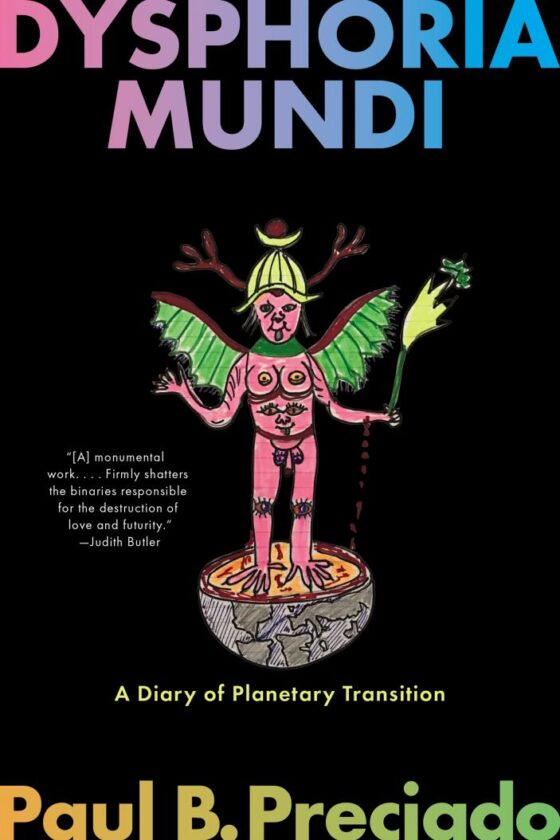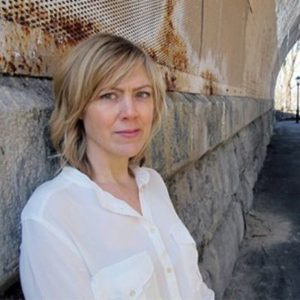
Amy Benson’s second book of nonfiction, Seven Years to Zero (Dzanc, May 2017) follows a couple’s move from the suburbs into New York City, and their foray into the landscape of parenthood. Benson’s first book, the critically acclaimed debut, The Sparkling Eyed Boy (Houghton Mifflin, 2004), winner of the Bakeless Prize in Creative Nonfiction, sponsored by Bread Loaf Writer’s Conference, tells a story about summer love on remote shores of the St. Mary’s River of Michigan’s Upper Peninsula.
As she did in her earlier work, Benson employs a poetic approach to language, making the natural world flicker and animate itself through lyrical precision and powerful images. In this brightly moving world, she draws attention to how one’s social interactions in the city affect the experience of environment, and explores how visual art transforms our relationships to our most dear and intimate partners.
I first met Benson years ago in New York, when we developed the First Person Plural Writing Series in Harlem, NY along with author and activist Stacy Parker LeMelle. At the time, all three of us were new mothers navigating the city and what felt like a sudden inability to engage with its immense size. We had two primary objectives for the series when we began: we wanted to showcase writers whose work might connect with the people in our neighborhood, and in recognition of the changing political landscape, we wanted to hear work that considered the plural point of view. In some ways, we were also looking for a different way to think about the voice—not only as a sign of individual authority—but as a means for reaching out to others.
Seven Years to Zero employs the plural voice in a way that often feels spooky and prescient. Recently, Benson and I wrote to each other to discuss the book, science, art, the environment, the personal, and what kind of questions she is considering now, in a time when all of our relationships to communities and institutions are changing.
***
The Rumpus: Seven Years to Zero opens with a series of pilgrimages, from the rural to the urban and from smaller cities to larger ones? It illustrates a kind of coming together of people with divergent origin stories. So the speaker appears as multiple but with a very specific point of view. Would you describe this text as personal or not? And how do you think about the way the personal functions in relationship to what one sees?
Amy Benson: I suppose what I’m hoping is that the reader is willing to take a leap with me into fuzzy and contradictory territory: the use of first person plural throughout the book when the essays might be describing the experience of a species, a city, a crowd, a small group, a couple, or even just me, the writer. I wanted to have the freedom to move between them without readers getting snagged, and I wanted readers to feel the expanding and contracting pluralities in their own lives. We give ourselves over to the species; we retract. We course through the streets, then we climb back inside a space with a lock on the inside, and ultimately curl up at night with our own organs. I wanted to be able to use a particular set of experiences, moving to New York, experiencing (and helping to make) a good bit of art, and eventually having a child, without triggering what “I” seems so often to demand: biographical explication, psychological temperature taking, epiphanies, progress narratives, etc. And in this book I was interested in humans as a species, as a social animal, and as a perceptual creature under the influence of collective threats and anxieties.
I can’t claim that the book is anything but personal, of course, as it’s describing experiences filtered through my consciousness. But I don’t feel precious about (my own) individuality anymore and have come to see it as a stumbling block for addressing the most pressing crises of the day, political, racial, and ecological. Individuality has been treated often as a zero sum game: my access to personhood is defined against your dehumanization; my right to ___ (water, safety, space, justice, air safe to breathe) is delivered via the deaths of others. Our American obsession with the personal and individual has made us the tremendous resource consumers we are in the world. It has meant violence in many forms against expanding the rosters of personhood and citizenship.
And so I found myself in the peculiar tightrope of often writing about perception and imaginative engagement, both of which are understood to be the interior territory of the individual, but insisting on the species-level point of view.
The works of art I was drawn to writing about for this project were often large-scale installations, works that were perhaps meant to be experienced collectively, usually for free, often with a participatory element. Maybe I felt with these works that I was doing my part: I was meant, as in a Turrell experiment, to have my perceptions altered, but not meant to be drawn into a what might be called a personal response. They were often works that altered my sense of engagement with the world but in such a way that felt generative. It’s my sincerest hope that the essays and stories in the book also offer invitations, themselves.
Rumpus: The speaker looks at the world through the artistic creations of others but also (her/them)selves from a distance. There’s one moment when the speakers see the window of their apartment as they pass by it on the train. They are drawn to the color of the walls: “We thought, Oh who lives there—we do!” There is this process of being surprised by one’s own existence despite all evidence of our existence being unlikely, so there is always the pressure of time underlying the text. Time is building; time is running out. How were you thinking about time as you were composing this work, and did finishing it change anything your understanding of it?
Benson: This is an enormous question that really gets at the heart of the project, which is why, I suppose, time found its way into the title: the counting of years ends in zero, the number that isn’t a number. Is zero starting over, is it oblivion, or is it living in the perpetual present, without the ability or desire to keep track, to add up. I think it’s a little of all of those.
But the ideas about time started with the art. I was looking at artwork that was nearly always ephemeral, time based, temporary, or difficult to re-stage. And I didn’t have much experience with that form of art before I started to share my life with an artist who worked almost exclusively in non-persistent art. I’m pretty afraid of loss, so this was a big change in my thinking. And it took an adjustment to be able to help him make things and then tear them down three days or a month later. The goal was not permanent, impressive objects, but experience and participation. And I came to embrace the idea of living experience of art. Time is marked by the way it persists and evolves in our whole selves. In the best-case scenario, we carry it forward and make something of it.
We understand this ecologically in ways that are always coded in the negative, the persistence and evolution of invasive species, contagion, contamination, etc. In some ways I took this book as an opportunity to cure myself of nostalgia, a disease I was raised on, one of those things that others call normal or even healthy when all evidence says its killing themselves and others. I wanted to be able to say, essentially, “This is,” rather than “This used to be” or even “This shouldn’t be.” We have set in motion mass extinction and climate change, etc. And there’s a point at which despair is a luxury or, worse, a waste of energy. And this has to do with time: where do we live? Past, present, future? Which seems like a silly question, but of course our country is seized right now by people who live in the past and are dragging everyone back. With the book, I wanted to approach some sort of future mind, something I think some artists are really good at—experimental architects and those who ask: what would this idea or fact look like taken to extremes. Which is why, toward the end of the book, I worked up to the idea of an artist duo who had settled on radical acceptance of environmental contamination and moved permanently to the area around Chernobyl. If you have tossed out the binaries on which our culture has feasted: contaminated/pure, nature/culture, preservation/denigration, and truly accepted that there’s not such thing as an “untouched” environment and that evolution is always at work, that all aspects of life are changing all the time, you might come to a similar ideological conclusion.
But if you’re looking to the future only, how do you not lose touch with compassion for the experiences of the present. I’d say it involves constant, pretty much untenable, balancing. Avoiding the opposite pole traps of despair and callousness, it seems like the work of a lifetime. I wrote the short “Year Zero” part that closes the book long after the other sections. I had just moved from New York after many years there and found myself once again wallowing in nostalgia and loss and the past. So it was, in part, reminding myself of that effort: to live in the present, but perhaps a present that carries the past with it but leans toward the future.
Rumpus: You have recently left New York City and relocated to Memphis, TN. Can you talk a bit about how moving now from a larger city to a smaller one has impacted how you think about, in your terms, your “personhood and citizenship”?
Benson: In the move I became acutely aware of how much I relied and assumed a certain level of anonymity. I was struck immediately here at the amount of greeting of strangers that goes on. I feel like in New York it’s a courtesy, a sign of respect, to not demand or offer the acknowledgment of strangers. But I think I’ve embraced that sense of invisibility a little too much. Here’s an example: I have been going to a dance class every week since I moved last summer, with an attendance of around thirty people. And, eight months in, I was shocked to realize that the instructor recognized me, had seen me. This is not normal, I understand. And New York fit me in that way: you can be “we” with the city without being known in good and bad ways. In New York I felt like my whole self was a permeable membrane, but that, in exchange, I was crowd. You can float, your history is not necessarily being recorded, but you also don’t have to be particularly responsible. It felt very uncomfortable at first here to be seen. Seen but not known. I’m trying to get more comfortable with that as means to becoming more responsible as a person to other persons. In the fall that meant taking someone in crisis into our home for a bit; it felt wrong not to.
I don’t feel terribly qualified to generalize about our new city yet, but I was struck immediately by how involved the Memphians we’ve met are with their communities. Nonprofits, progressive organizing, and volunteerism seem to abound. Maybe it’s because the disparities are more immediately apparent: highly segregated neighborhoods, lack of infrastructure. Maybe we’re just experiencing the national surge in activism following the devastating election. But we’ve experienced on several levels this idea about Memphis (and probably many other small cities): they might not have something you need or are seeking, but there are fewer impediments for you to make or do that thing yourself.
Rumpus: The natural world is visceral throughout this work, even if it is only manifest as diorama or display. There’s this gorgeous sentence almost midway through the book that really hits on an aspect of human experience that is harder to explain: “There’s enough wild in us to feel patches of hair rise on the back of our necks, and enough tame to enjoy the feeling.” I know from our previous conversations that you have a background in biology. Can you talk a little bit about how your history with science influences your engagement with art and writing?
Benson: I had a plant physiology seminar as an undergraduate that I loved. I loved thinking about how they actually move and communicate and defend themselves and portion out or deny resources to their various parts. And at some point the professor got frustrated with us about something and said vehemently, “You have to learn how to think like trees!” And that fit exactly right. And, weirdly, I feel like I can trace being a writer to that exhortation. It gave me permission to give over to metaphor and to take leaps out of my species, even out of my kingdom. I grew up taking biological things apart and trying to figure out their physiology—plants, dead bugs, fish bodies that we would later eat. Early on, I felt the pull of careful study. But after that plant physiology class, I realized (without fully knowing it) that the work I wanted to do with “natural” things was imaginative work rather than computational or experimental.
And still, in writing, I’m always falling off nonfiction into something else. I always want to tip over into the vehicle of the metaphor and spin around with that for a while before coming back to the tenor. And that can be put me a little out of sync with nonfiction at times since nonfiction is meant to be/presumed to be more tenor than vehicle.
In terms of what I draw from science, I think there’s a whole vocabulary for parts and interiors and systems that I draw on, and always evolution, the mechanism of evolution, the theories of which, themselves, are always evolving. It’s fascinating to me that Lamarckian Evolution is having a bit of a comeback, that in some cases progeny might inherit directly and genetically from parents’ environmental interactions. I also think I’m interested in what the scientific method offers to essayistic forms. Science is not the land of certainty; that’s a myth that lives in popular culture but also in scientists who have forgotten that its truths are provisional. You have to always form the next question, better than the last one or, no, a question you couldn’t ask until you had asked the ones before it. I think that’s what science and art and writing have in common. At least in the best-case scenarios.
Rumpus: Who are some other writers you love who “think like trees,” or, at the very least, apply some kind of synasthaetic intention to their interpretations of the material world? Who have you read, or who are you reading, that helps you to rethink your relationship to experience and feeling as having other interpretations than the kind that feels most obvious, most personal?
Benson: An Elemental Thing by Eliot Weinberger does this for me, even though I’m not sure I always understand the essays directly. I often feel like I understand them out of the corner of my eye. That he has three or four invisible subjects or forms conjured by the one right in front of me, and I end up maybe emotionally but also strangely physically, at least in my mind’s eye feeling the forms. As if I’m walking around in a physical dig site. The mirror opposite of what it felt like to walk into “The Octagon Room,” which is the subject of the first essay proper in Seven Years to Zero. Walking into that installation felt like walking into an essay.
I’m really moved and amazed, as well, by writing that seems to conjure something ancient or prophetic but is also broken open to the political or social moment and to the unique contours of that writer’s mind, works by writers like Anne Carson, Aimé Césaire, Sherman Alexie.
And in a very different way, Here is Where We Meet by John Berger. I get really emotional just thinking about that book, which is ironic because I’m thinking of it as a book that teaches what it means to feel profound attachments and honor the dead and the living without taking the “most obvious” path. He simply conjures the dead, has conversations with them, loves them in the margins, writes his own death in the margins.
There’s profundity in all of these works, but also an exhilaration, that they leap into being their subjects.
Rumpus: Let’s talk a little bit about what you mean by the “tenor” and “vehicle” of nonfiction writing. Do you mean tenor as the lyrical aspects of the work, its poetics? Or are you speaking primarily of the voice and its affect? By vehicle are you referring to the narrative or means by which the story moves along? And do you think this has anything to do with what Jia Tolentino wrote about the in her recent New Yorker essay “The Personal Essay Boom Is Over”?
Benson: I think your question is more interesting than what I meant! I was thinking of nonfictional actuality as the tenor, the thing in front of you to be described, the actual object, fact, experience, phenomenon. And that’s the territory that makes nonfiction a genre, that’s meant to give it its special qualities. But then there’s the vehicle, and in a metaphor the tenor is the vehicle. And I think that much of my writing life has been wrapped in purposefully taking that conflation too far. Turning thoughts and imaginings, at least briefly, into reality on the page. Thinking about the power or helplessness of having one thing turn into another. And if a world religion can be founded on this (the word became flesh and dwelt among us; take eat, this is my body, etc.), well… Or when Sherman Alexie writes, “Was it 1676, or 1976, or 1776, or yesterday.”
But I think your question is more nuanced. And I do think it’s related to Tolentino’s essay, the idea of yoking narrative to an expected emotional trajectory for the writer and reader. And I think it’s great that she was able to point out the ways that she and other editors thought that manifestation of the “personal essay” was not serving the (primarily women) writers financially, artistically, or culturally. But I also think that such a title doesn’t serve women writers either. That’s probably what will be remembered, the gravestone on the idea of women writing about experience.
In literary prose, we’re used to critiquing the way narrative might plow under the more vulnerable, nuanced aspects of an experience or invented story. But it also seems like there’s something in your formulation that gets at the way a too heavy reliance on what we might call voice or fiddling with lyricism might make a piece less responsible to its subject. That seems like, for the writer and then the reader, a case by case wrestling with honesty and motivation.
Rumpus: Seven Years to Zero offers the experience of trying to make sense of other people’s interpretations of the world as a kind of self-transformation. I’ll argue that this kind of work we see less often in nonfiction these days, perhaps because the project engenders so many questions that don’t have certain answers. To engage in a process of finding the questions reveals a kind of confidence that seems well-suited for the current moment, whether related to changes in our understanding of race/power, politics, the environment, or the purpose of learning. How did writing this book affect your relationship to the process of asking questions, and what ones did finishing it leave you with?
Benson: There’s language from James Baldwin that I’ve turned over and over (and which is used so starkly and penetratingly by Claudia Rankine in Citizen): “The purpose of art is to lay bare the questions hidden by the answers.” It stops me short every time I think of it, both for how our country is still trying to offer the same life-denying answers in different guises as when he was writing, and for how his formulation almost viscerally and cinematically makes me chase after those questions. I also think that we might think of “form” in terms of “answers,” that as a culture certain forms are so ubiquitous that they become both invisible and definitive answers. The progress narrative, the epiphanic narrative, the everything-was-better-in-the-old-days narrative, the way time is treated in novels. And probably a lot of questions don’t make it to the conversation because of those forms-that-are-presented-as-answers, as endpoints. So, one of my questions was, what can be thought and experienced, and in what forms, if you take away those answers. (Though certainly some epiphanies and mourning of loss sneak into the book.) And then, how do you keep the possibilities you come up with from being monstrous. Sometimes the questions laid bare can look and feel monstrous: what if we didn’t mourn the extinction of all of the species we’re killing, because we’re certainly not willing to sacrifice for their survival, or to stop procreating at such a rate to give the earth a rest. That would look monstrous, callous, but is probably less hypocritical. What if (to bring the original context for the quote) white people said, I cannot stand not being special/exempt/safe/cute/valued/rewarded for no particular reason or effort. But the current answers that obscure those questions are probably much more dangerous because they take us further from the actual exchanges and truths.
I think, to answer your question more directly, that the process of asking questions for this book was about moving toward discomfort, which I was trying to do, am still trying to do, more in life, as well. For a long time I thought the question, “What if we can’t help but be afraid.” would be the last line in the book. It comes at the end of a chapter in which the narrators are interviewing a set of artists who have so internalized the idea of a chemically and biologically integrated world that they have moved to the area around Chernobyl. And I kind of wanted to leave the reader out there in this irradiated place, being exhorted to forget the structures we have in place that keep humans mentally, philosophically, emotionally exempt. But the narrators are saying, What if we can’t help it?
And I think those are the questions I’m left with: how do I hold myself to discomfort, how can I be sure it’s not making me monstrous, what if I can’t help being afraid?

